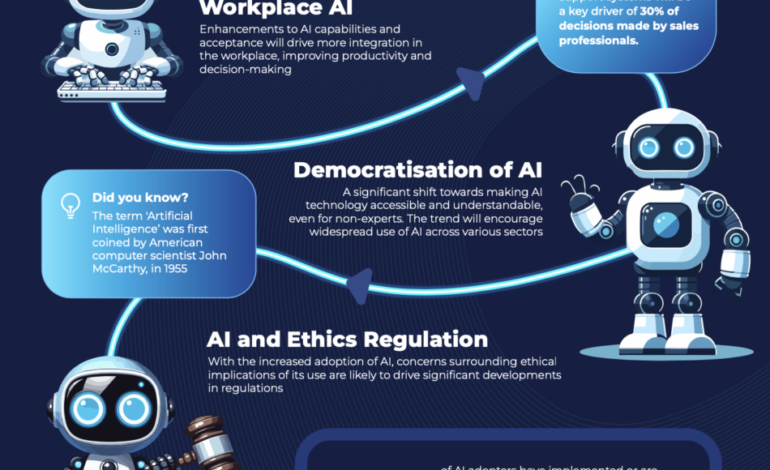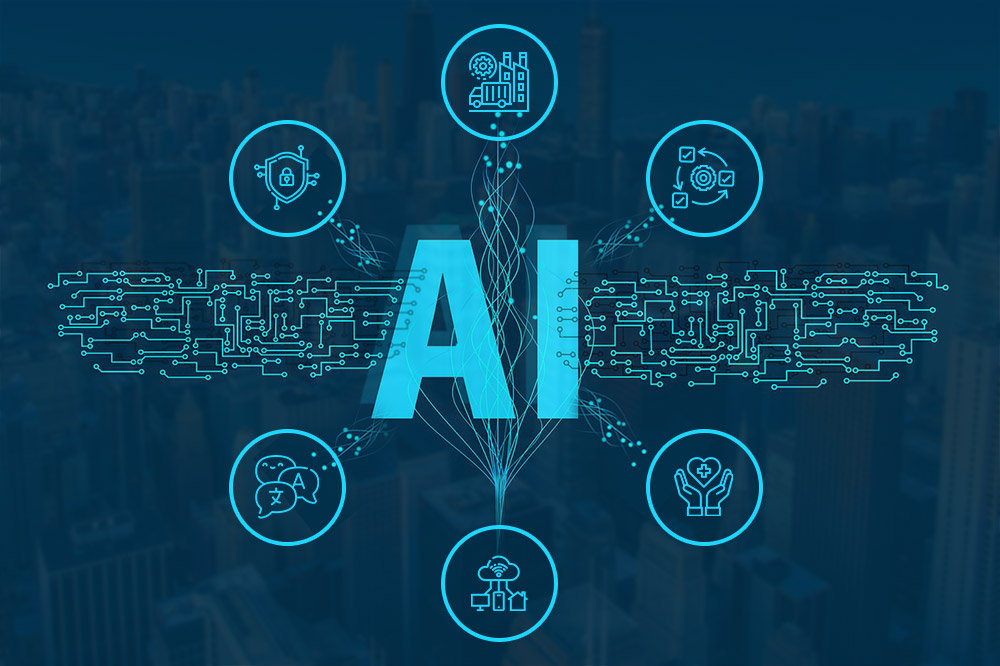AI’s Next Year: What to Expect & How to Use It

Artificial Intelligence Advancements to Watch for in the Coming Year
The world of Artificial Intelligence (AI) is evolving at an astonishing pace. What was once relegated to science fiction is rapidly becoming integrated into our daily lives and, crucially, impacting businesses across all sectors. This post will delve into the expected advancements in AI over the coming year, moving beyond the hype to focus on practical applications that both businesses and individuals can readily leverage. We’ll examine trends in generative AI, machine learning operations (MLOps), edge AI, responsible AI, and more, outlining what you need to know to stay ahead of the curve.
Generative AI: Beyond the Hype
Generative AI dominated headlines last year, and its momentum isn’t slowing down. While tools like ChatGPT have shown incredible capabilities in generating text, we’re seeing a significant shift towards more specialized and practical applications. Expect to see:
- Increased Specialization: Generic chatbots are giving way to industry-specific generative AI models. Instead of just writing general content, you’ll find AI tailored for legal document drafting, financial report generation, or even creating marketing copy optimized for specific demographics.
- Multimodal Capabilities Expanding: Generative AI isn’t limited to text anymore. We will see significant improvements in the ability to generate images, video, and audio from text prompts, as well as combine different modalities (e.g., generating a short video based on a written script and accompanying music).
- Integration with Existing Workflows: Rather than being standalone tools, generative AI is increasingly being integrated into existing software platforms – CRM systems, design tools, code editors. This “embedded AI” approach will make it far more accessible and useful for everyday tasks.
- Improved Prompt Engineering Tools: Getting the best results from generative AI requires skill in prompt engineering (crafting effective prompts). Expect to see new tools and techniques emerge that automate or simplify this process, making generative AI usable by a wider audience.
The Rise of MLOps: Bridging the Gap Between Development and Deployment
Many AI projects fail to move beyond the proof-of-concept stage because of challenges in deployment and maintenance. MLOps (Machine Learning Operations) is the key to solving this problem. In the coming year, we anticipate:
- Increased Adoption of MLOps Platforms: Companies will increasingly turn to dedicated MLOps platforms that streamline the entire machine learning lifecycle – from data preparation and model training to deployment, monitoring, and retraining.
- Automated Model Monitoring & Drift Detection: Models degrade over time as underlying data changes (a phenomenon known as “model drift”). MLOps tools will incorporate sophisticated monitoring capabilities to detect this drift early on and trigger automated retraining processes.
- Feature Store Development: Feature stores centralize the management of features used in machine learning models, ensuring consistency and reusability across projects. Expect increased adoption and maturation of feature store technology.
- Emphasis on Reproducibility: Ensuring that machine learning experiments are reproducible is critical for debugging and compliance. MLOps practices will prioritize version control and tracking of all aspects of the model development process.
Edge AI: Bringing Intelligence Closer to the Data
Cloud-based AI has its limitations, particularly in terms of latency and bandwidth. Edge AI – processing data directly on devices (e.g., smartphones, cameras, industrial equipment) – is gaining traction. Look for:
- Increased Use Cases in IoT: Edge AI will power a wide range of Internet of Things (IoT) applications, from predictive maintenance in factories to smart city initiatives and autonomous vehicles.
- Specialized Hardware Accelerators: The demand for edge AI is driving the development of specialized hardware accelerators – chips specifically designed for efficient machine learning inference on low-power devices.
- TinyML Advancements: TinyML focuses on deploying machine learning models on extremely resource-constrained microcontrollers. Expect to see more sophisticated TinyML algorithms and tools enabling new applications in areas like wearable technology and environmental monitoring.
Responsible AI: Addressing Ethical Concerns
As AI becomes more pervasive, concerns about bias, fairness, and transparency are growing. Responsible AI is a crucial area of focus. In the coming year:

- Bias Detection & Mitigation Tools: Tools will become more sophisticated at identifying and mitigating biases in datasets and machine learning models.
- Explainable AI (XAI) Adoption: XAI techniques aim to make AI decision-making more transparent and understandable, allowing users to understand *why* a model made a particular prediction. Expect increased adoption of XAI methods across industries.
- Regulatory Scrutiny & Compliance: Governments worldwide are starting to regulate AI. Organizations will need to demonstrate that their AI systems are fair, safe, and compliant with emerging regulations.
- Ethical AI Frameworks: Companies will increasingly adopt ethical AI frameworks – guidelines and best practices for developing and deploying AI responsibly.
Other Notable Trends
Beyond the core areas discussed above, keep an eye on these emerging trends:
- Synthetic Data Generation: Addressing data scarcity issues by creating synthetic datasets that mimic real-world data while protecting privacy.
- Reinforcement Learning Advancements: Improvements in reinforcement learning algorithms will enable more sophisticated robotic control, game playing, and optimization tasks.
- Quantum Machine Learning (Early Stages): While still in its early stages, research into quantum machine learning could potentially unlock significant performance gains for certain AI applications down the line.
What Does This Mean for You?
For Businesses: Now is the time to start experimenting with these technologies. Identify areas where generative AI can automate tasks, improve decision-making, or enhance customer experiences. Invest in MLOps capabilities to ensure your AI projects scale effectively. Prioritize responsible AI practices to build trust and avoid regulatory pitfalls.
For Individuals: Upskill yourself with knowledge of AI concepts and tools. Learn prompt engineering techniques to leverage generative AI effectively. Consider how AI can enhance your productivity and automate repetitive tasks in your personal life.
The coming year promises exciting advancements in the field of artificial intelligence, offering tremendous opportunities for both businesses and individuals. By staying informed about these trends and proactively adapting, you can harness the power of AI to achieve your goals.



